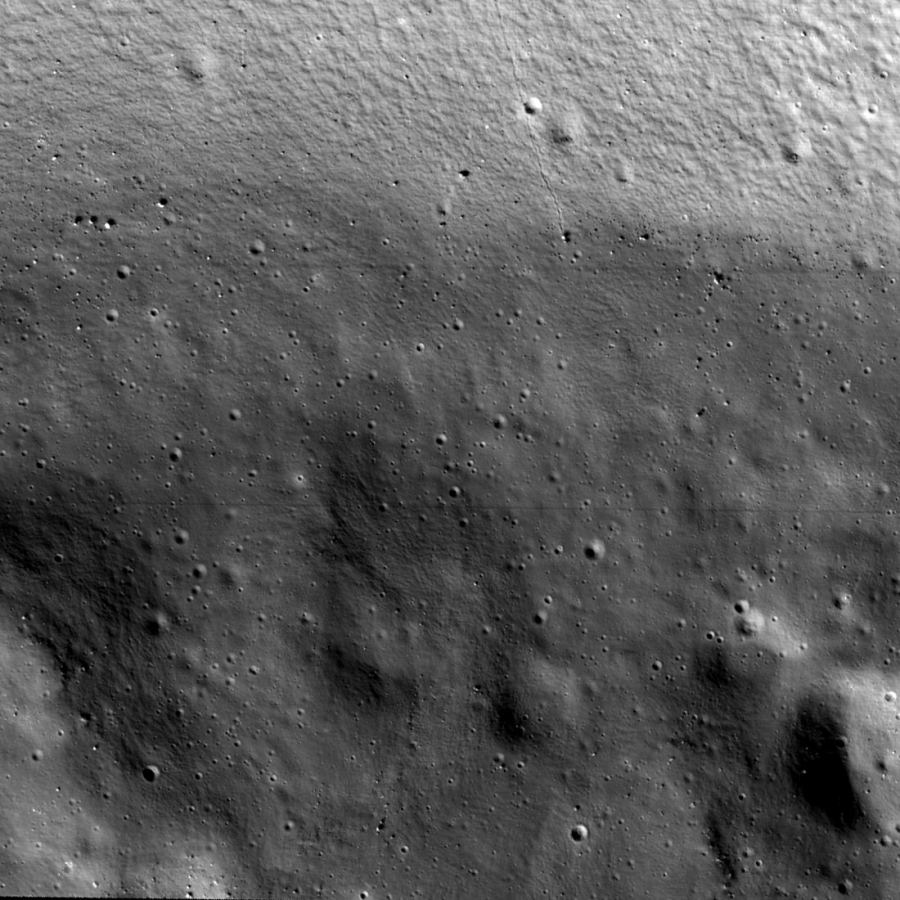An instrument called ShadowCam is giving NASA’s planned Artemis missions to the Moon some advanced views of a landing site. It’s mounted to the Danuri Korea Pathfinder Lunar orbiter sent to the Moon last year. Lately, this amazing camera has been sending back some highly detailed images of the lunar north and south pole regions.
One view peers into the deeply shadowed Shackleton crater. It shows the track of a boulder that slid down from the rim. This impact crater lies smack on top of the south rotational pole of the Moon. It dates back to an ancient impact some 3.6 billion years ago. Shackleton’s 12-kilometer-deep interior is in perpetual shadow. That is, the Sun never shines inside it. However, the mountains on its rim are always in sunlight.

The ShadowCam is 200 times more light-sensitive than most other cameras used to study and map the Moon from orbit. Its high-resolution images will provide a great deal of information for Artemis mission planners.
ShadowCam is able to see inside Shackleton and other craters fairly well thanks to Earthshine. It also uses light reflected from nearby mountains and crater walls that do receive direct sunlight. Some of ShadowCam’s images were captured during New Moon when sunlight shining off of Earth’s surface reaches the Moon. These “reflected light” sources aren’t bright, but ShadowCam was able to detect them.
Shackleton: One of the Intriguing Lunar Craters
NASA and other agencies landing astronauts on the Moon want to explore the Shackleton crater polar region because there’s a good chance that it contains water ice deposits. Over the years, lunar orbiters have studied and mapped this region. They’ve investigated the radiation regime and physical properties of the rocks and craters there. There appears to be an abundance of hydrogen, oxygen, silicon, iron, magnesium, calcium, aluminum, manganese, and titanium in the area.

Future explorers could locate resource processing facilities in the region to mine materials needed for construction and other activities. In addition, thanks to its perpetual shadowed condition, this region offers a great place for astronomical observations in the future. All of that activity lies farther down the line, after Artemis III lands its astronauts on the surface. Their first mission will be only a few days, long enough to start an in-depth study of this fascinating area of the Moon.
The Artemis mission plans cover a variety of bases, from the chances for scientific discovery, and economic benefits, but also because new generations of explorers will be returning to the Moon, more than half a century after the last ones left. The Artemis missions are part of an international cooperative effort that includes NASA, Canada, ESA, and others. Not to be outdone, the China National Space Administration also has set its sights on the Moon. They recently announced missions that could take their first explorers to the lunar surface later on in this decade.
For More Information
NASA’s ShadowCam Images Lunar South Pole Region
Artemis Missions

